Last updated on January 26, 2024
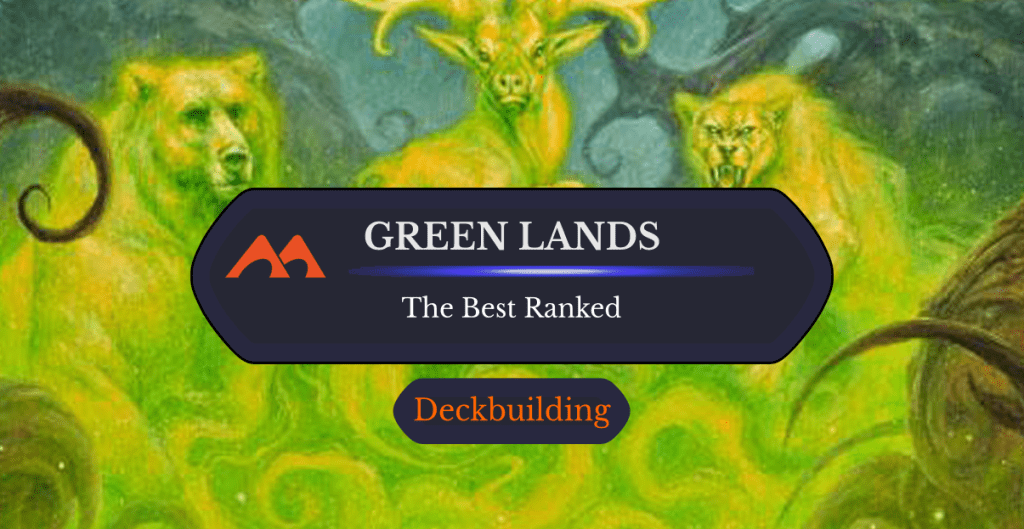
Gaea's Cradle (Ultra Rare Cards) | Illustration by Filip Burburan
Every color in Magic’s color pie has something it specializes in. Green is often seen as the creatures and lands color since it's great at ramping and can use the extra mana to play massive creatures. Green also has several spells that allow you to find any land from your deck, not just basics. To go along with the color's emphasis on finding and allowing you to play extra lands, green also has a number of great land cards themselves.
In keeping with green’s focus on creatures, a lot of powerful green lands synergize well with having lots of creatures, or at least a few powerful ones. Others make it slightly easier to cast creatures or activate their abilities. There are also some green lands that work well with other popular deck archetypes like artifacts.
You’re likely looking to include some lands beyond basic Forests when building a green deck. Let’s take a look at some of your best options for green lands so you can decide how to improve your mono-green land bases!
What Are Green Lands in MTG?
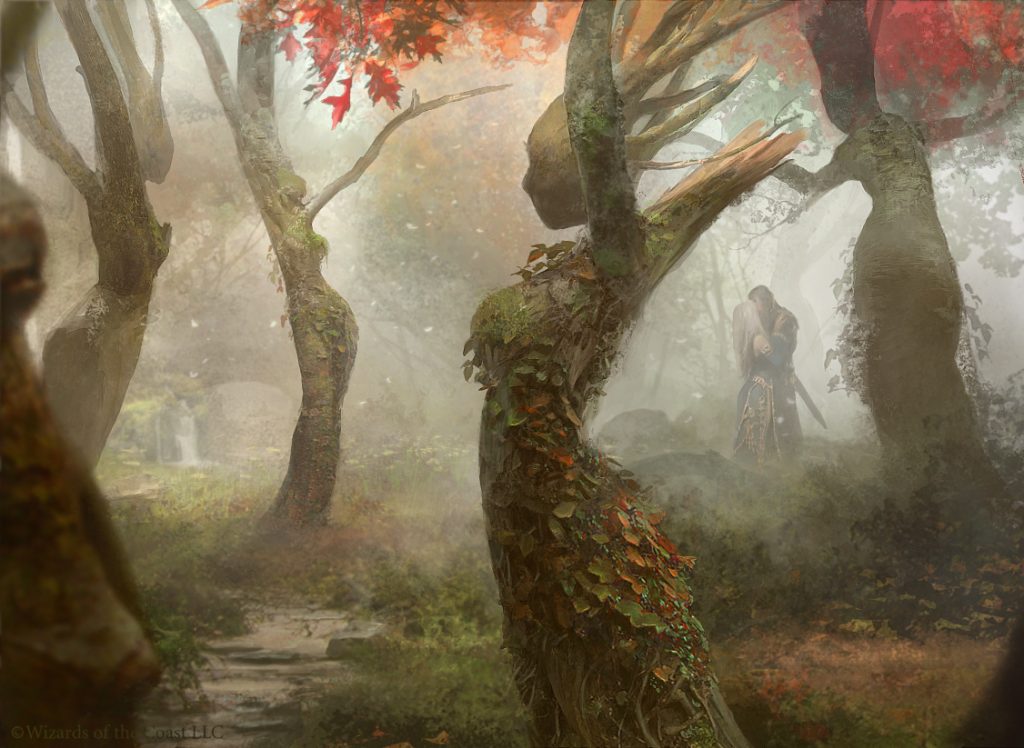
Dryad Arbor | Illustration by Brad Rigney
The label “green lands” can be somewhat misleading because all lands in Magic are considered colorless. When I'm talking about green lands, I mean lands that are a Forest or include a green mana pip somewhere in their rules text.
While these lands are still colorless, the inclusion of a green pip (or the implied pip present on all Forests) gives them a green color identity. This means that these lands can only be put into a Commander deck whose commander has green as part of its color identity.
#24. Desert of the Indomitable
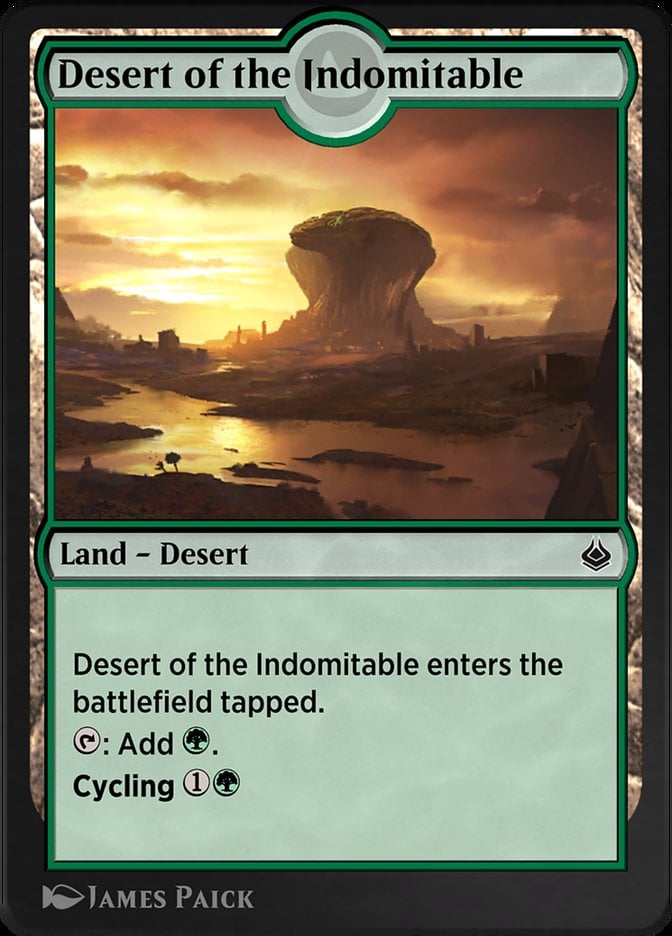
Desert of the Indomitable isn’t an every-deck kind of card, but I thought it deserved a mention as one of only a few deserts in Magic. You’ll want to include this card if you’re building a deck that’s looking to make use of deserts.
#23. Khalni Garden
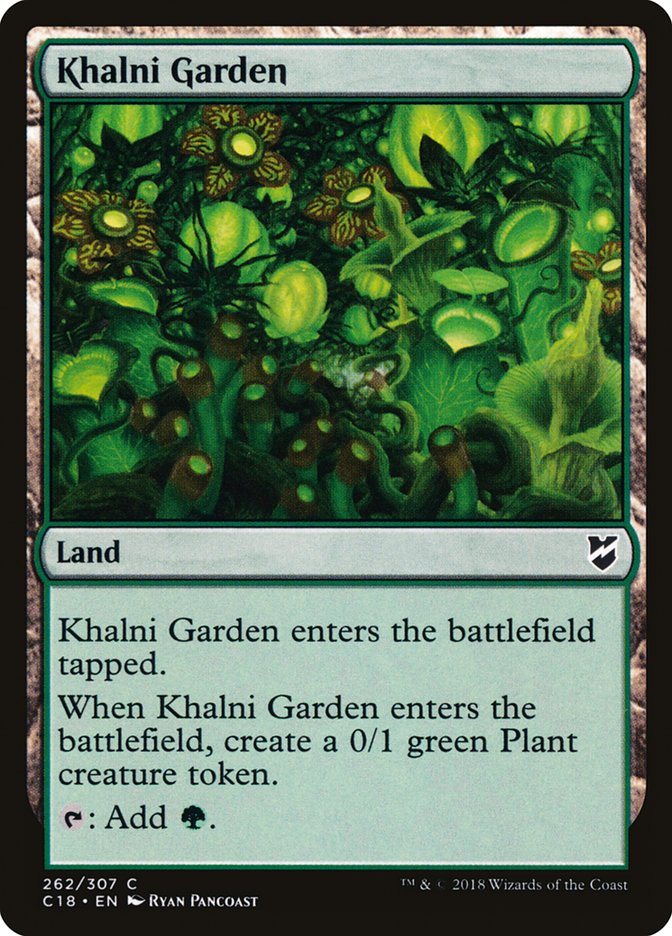
While Khalni Garden is a mono-colored slow land, it gives you a free creature when it enters. This can be especially helpful if you’re playing a deck that includes the green staple Avenger of Zendikar because it can make good use of the Plant token.
If you’re playing a deck that’s looking to sacrifice its own creatures, getting a creature token can be well worth waiting for your mana because you can likely get more use out of a free body than one extra mana.
#22. Hollow Trees
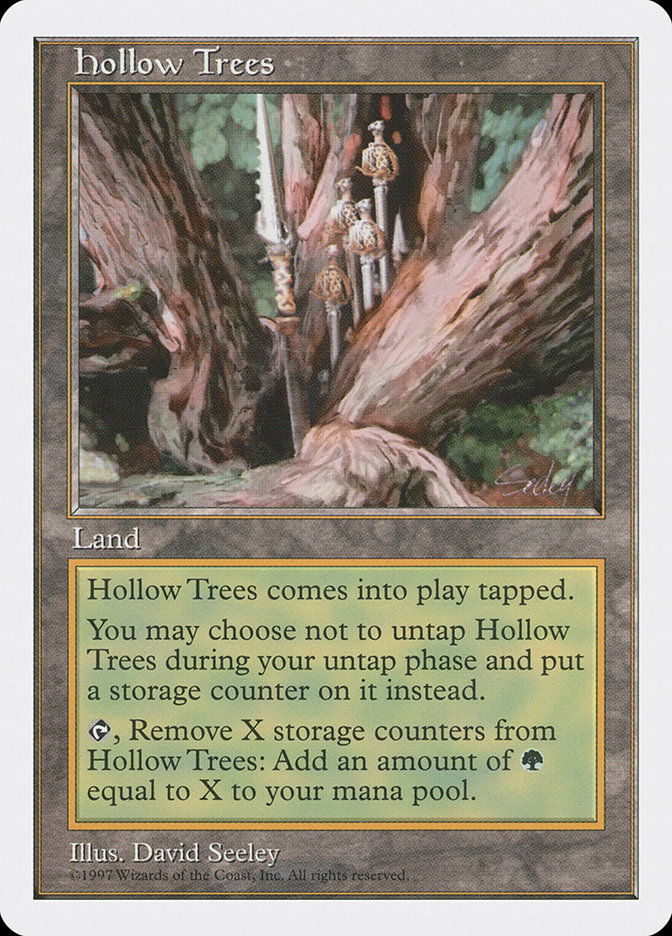
The benefit of Hollow Trees isn’t readily apparent, but it can actually be a very useful land. It allows you to store up extra mana each turn if you’re afraid of missing land drops. It’s only good for a one-time mana dump before you have to start over, but it can still help you stay somewhat on track by allowing you to cast a higher mana cost card even if you’re behind on lands.
You can still store up extra mana for an explosive turn sometime down the line if you aren’t missing your land drops, using this card to pump up an X spell like many hydra creatures or Finale of Devastation.
#21. Rushwood Grove
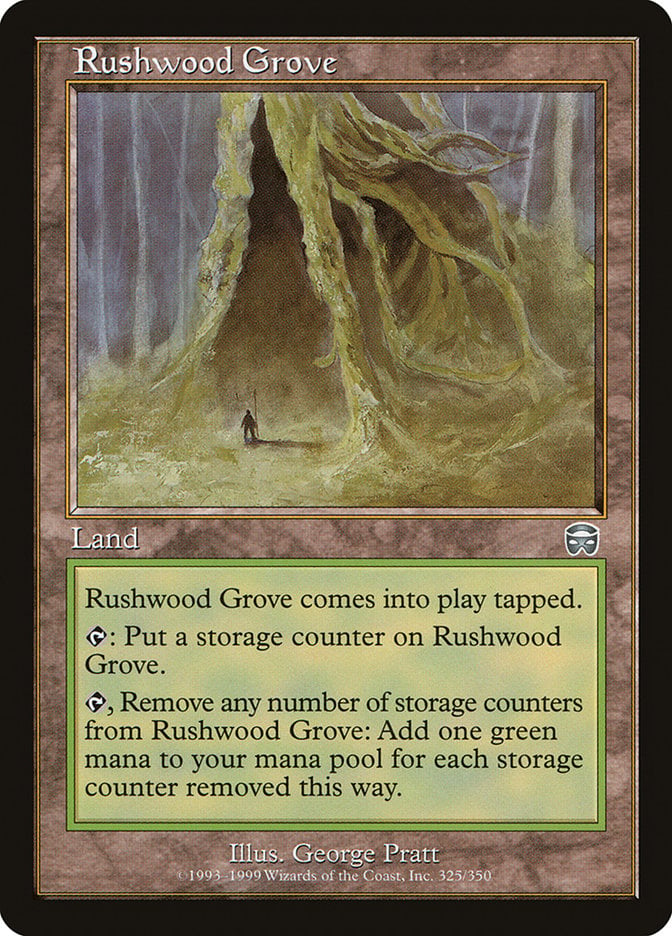
Rushwood Grove is actually an improved version of Hollow Trees because you get to decide when you want to put a storage counter on it. This allows you to see what you’re going to draw for the turn to decide if you need its mana or if you can just tap it for another counter.
This card can also add extra counters to itself if you’re running ways to untap lands during your turn.
#20. Memorial to Unity

Memorial to Unity is a good utility land for creature-heavy decks that may need a way to search for answers. There are also plenty of green decks that get payoffs from lands being in or going to the graveyard, so you can get good use out of this card and use it to synergize with the rest of your deck.
#19. Hashep Oasis
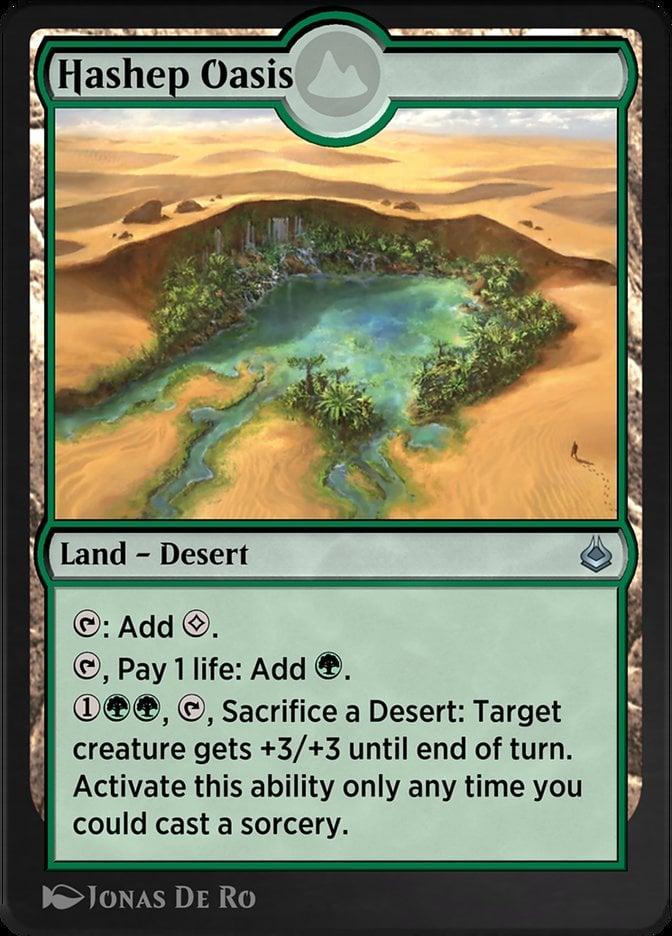
While there aren’t many decks built around deserts, Hashep Oasis is a great resource for any that are. It can turn your lands into ways to buff up your creatures, which is a good trade if you just need to do some extra damage on a turn and are already flooded with mana.
This card is made much better if you’re running ways to retrieve or play lands from your graveyard, like Wrenn and Six or Crucible of Worlds.
#18. Vivid Grove

Vivid Grove is a good source of cheap mana fixing for multicolor decks running green. It works especially well in proliferate decks because you can continue putting extra charge counters on it and using it as a source of any color for longer than usual.
This card and those like it can be especially helpful in Atraxa, Praetors’ Voice decks.
#17. Sapseep Forest
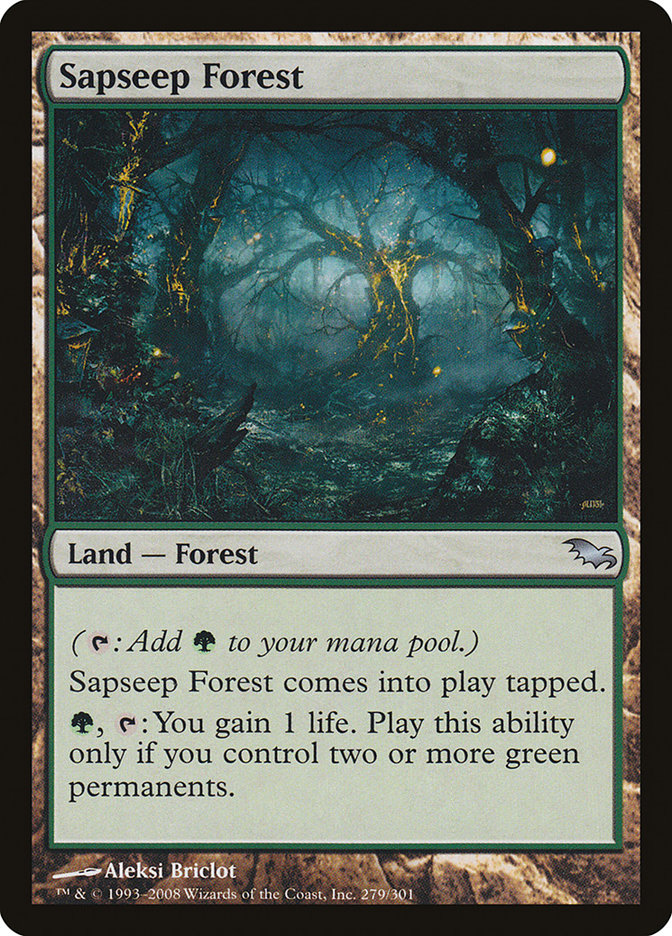
Lifegain decks running green can make great use of Sapseep Forest because you can always rely on having at least some source to pay off any abilities that trigger when you gain life.
Since this card also has the Forest land type, you can search for it with cards like Skyshroud Claim or Nature's Lore.
#16. Bala Ged Recovery / Bala Ged Sanctuary
As a modal double-faced card, Bala Ged Sanctuary isn’t just a green land that enters tapped. You can also use it to get any card back from your graveyard by casting it on its Bala Ged Recovery side. This increases the chances that it’ll be helpful to you whether you draw it earlier in the game or later when you already have enough land.
#15. Tree of Tales
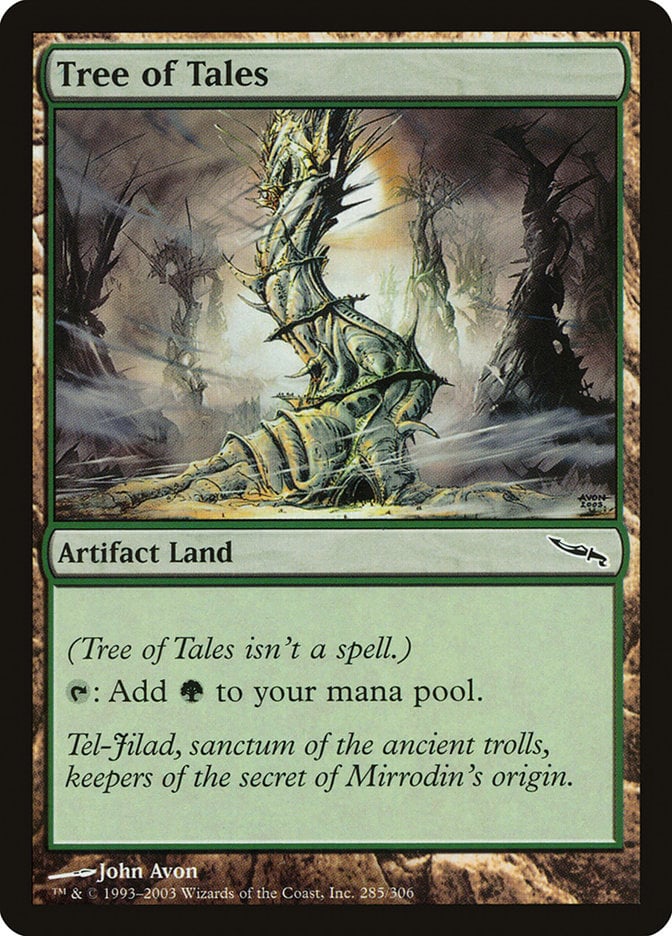
Tree of Tales is a handy card for artifact decks. It can help pay off abilities that trigger when artifacts enter the battlefield or those that care about how many artifacts you control. The one downside to this land is that it does become much easier to remove than a typical land card.
#14. Okina, Temple to the Grandfathers
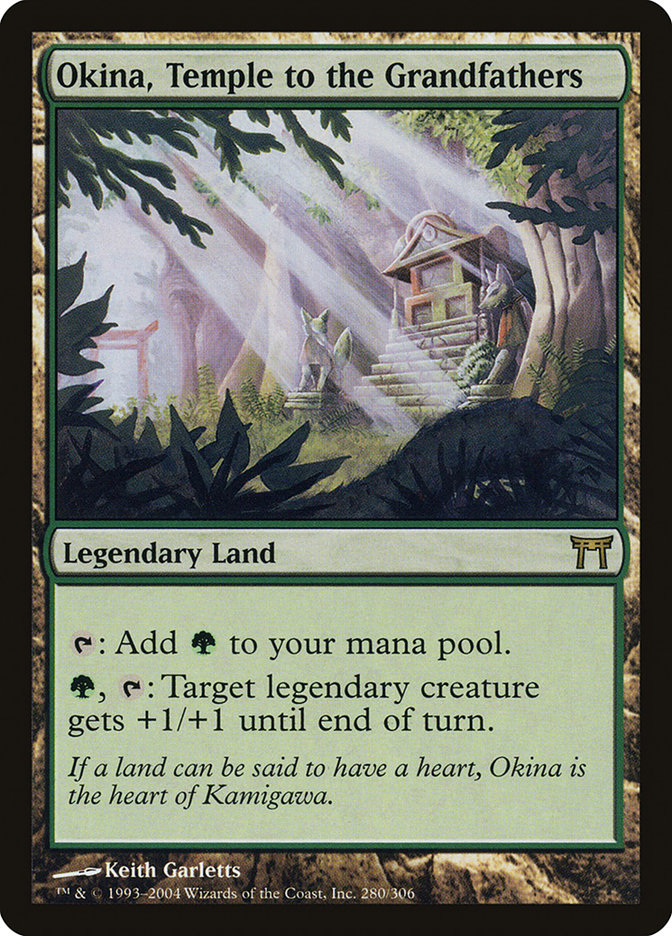
There’s no real downside to including Okina, Temple to the Grandfathers in your mono-green decks. While you’ll likely have enough basic Forests to fetch with ramp cards in mono-green, this deck just offers you another way to produce green mana while also having the option to buff a legendary creature a bit.
It isn’t overwhelmingly powerful, but it’s consistently good.
#13. Turntimber Symbiosis / Turntimber, Serpentine Wood
Turntimber, Serpentine Wood is one of the better MDFC lands because it gives you the option of having it enter untapped. Its front side can help you drop a huge creature card for free. Even if you whiff and get a smaller one, it’ll buff it up a bit.
This card works well with Sylvan Library because you can ensure you get a good creature off the top of your library before you cast it.
#12. The Shire
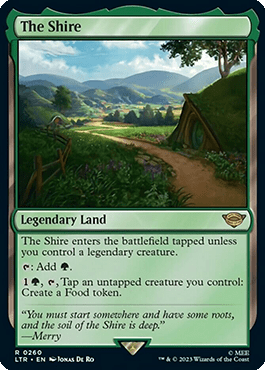
Though Food tokens aren’t currently the most powerful, Tales of Middle-earth previews hint at an increased focus on them, and they could also crop up in our return to Eldraine next fall. This means The Shire will likely be a very helpful land in the near future.
Besides its in-game use, both art treatments previewed for this card look great and any fan of Lord of the Rings will likely want a copy of this card.
#11. Argoth, Sanctum of Nature
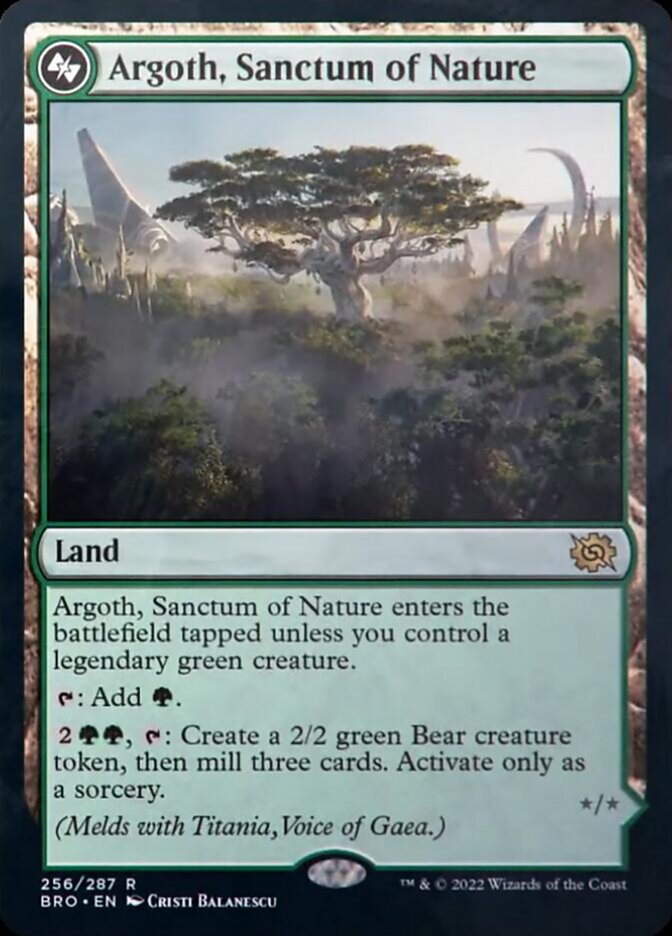
Argoth, Sanctum of Nature is a decent land on its own. Being able to create a creature token can be helpful if you’re out of resources in your hand and need to put your mana somewhere. It also helps to contribute to the chance to meld it with Titania, Voice of Gaea since it mills you.
When it melds into Titania, Gaea Incarnate, this card can also get any lands it milled back onto the field while also turning into a massive creature.
#10. Pendelhaven
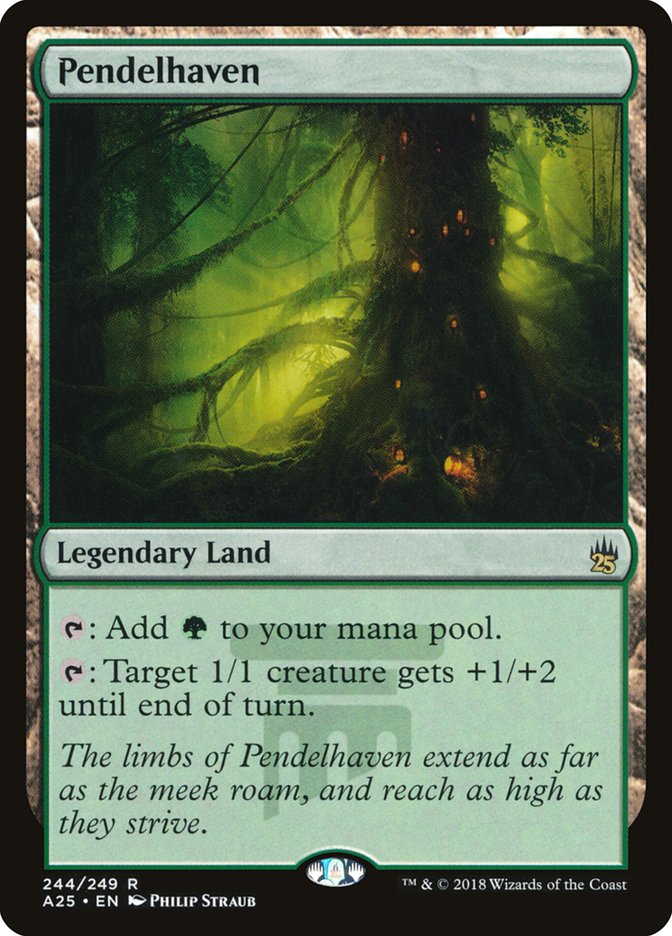
Pendelhaven is a great tool for infect decks looking for a way to dole out more poison counters. One extra damage might not be a lot, but one extra poison counter is very significant.
This card can target creatures like Glistener Elf or Inkmoth Nexus, making them harder to kill and letting them speed up your win via infect.
#9. Mosswort Bridge

Mosswort Bridge offers you the opportunity to get a free spell down the line. In a deck that runs either a lot of creatures or very powerful ones, something common in green decks, you can easily activate this card to allow you to play whatever you found from its hideaway ability.
You get a spell that costs more than one mana for just one, or at the very least you’re sorting through some dead draws with hideaway.
#8. Lair of the Hydra
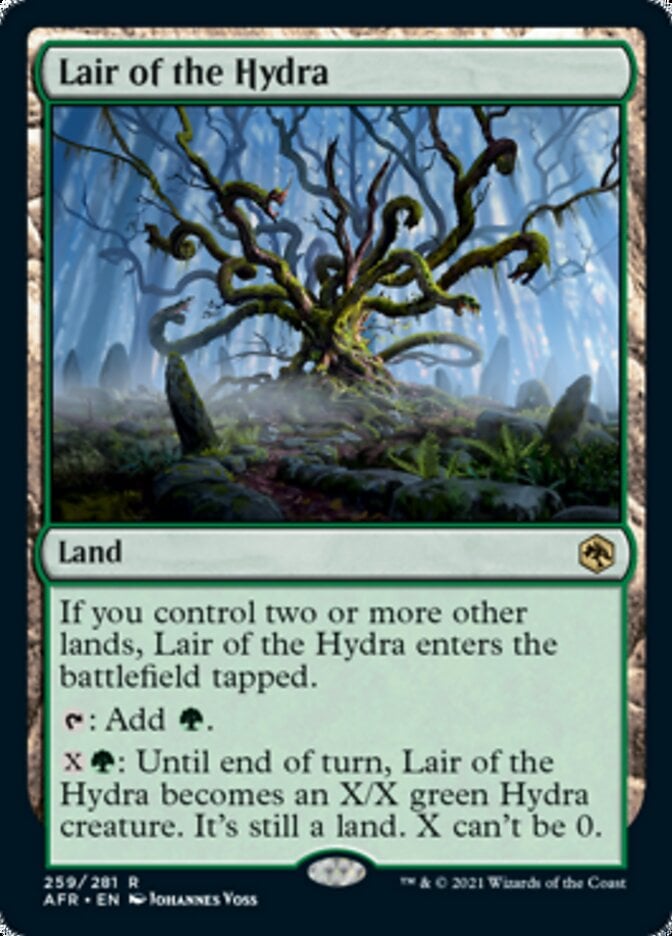
Lair of the Hydra is a great way to ensure that you have a creature at your disposal. Even if your opponent plays a board wipe to remove all your creatures, you can still use Lair of the Hydra as a blocker or to do damage as you rebuild your board state.
#7. Oran-Rief, the Vastwood
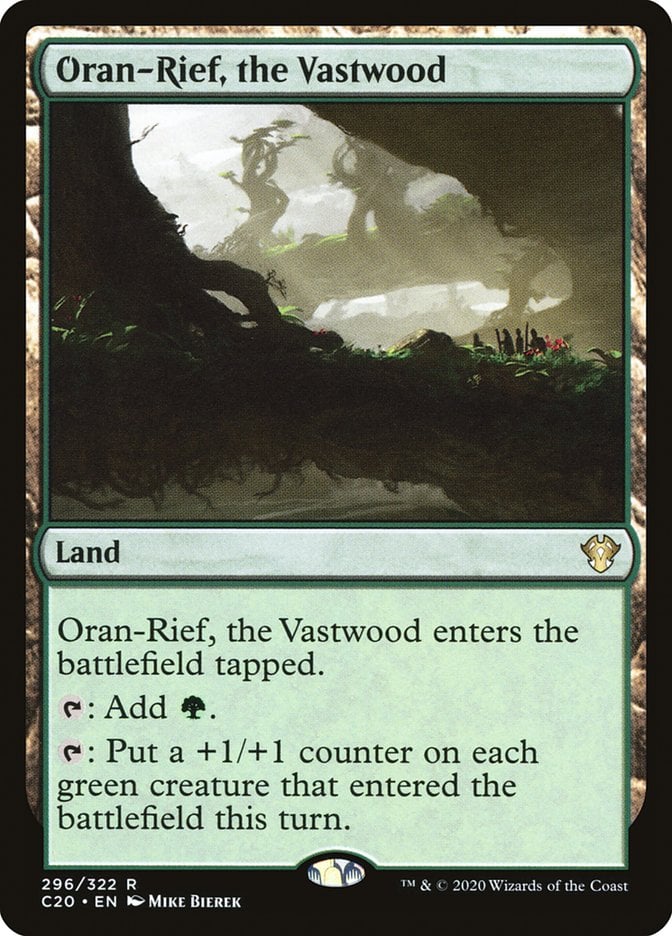
Oran-Rief, the Vastwood can be a very helpful land in creature-focused decks, especially ones that create a lot of creature tokens. If you use something like Rhys the Redeemed or March of the Multitudes to create lots of tokens on one turn, you can then tap this land and immediately buff them all.
This card also works well in decks that care about +1/+1 counters and/or proliferate effects.
#6. Yavimaya, Cradle of Growth
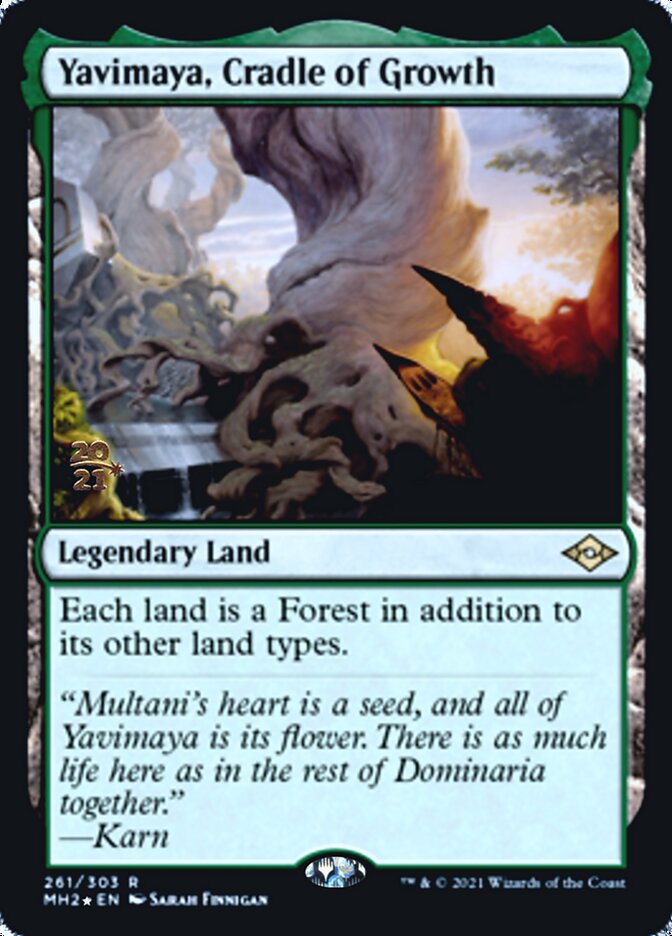
Yavimaya, Cradle of Growth isn’t just a green land; it also makes all other lands Forests. This is great for mana fixing in multicolor decks, especially 5-color ones that often rely on green mana to help with fixing or ramp.
This card can also be very helpful if you’re running Forestwalk creatures because it allows you to attack any of your opponents unblocked now that all lands are also Forests.
#5. Growing Rites of Itlimoc / Itlimoc, Cradle of the Sun
Itlimoc, Cradle of the Sun is just a hands-down better version of Gaea's Cradle since it can tap for mana even if you don’t control any creatures. If it weren’t for the fact that you had to start this card out as Growing Rites of Itlimoc, it would easily earn the top spot on this list.
As is, it’s still very powerful. It’s pretty easy to transform Growing Rites of Itlimoc into Itlimoc, Cradle of the Sun. It’s especially helpful that its transformation happens at your end step since your opponents won’t get a turn to try and take out your creatures.
#4. Dryad Arbor
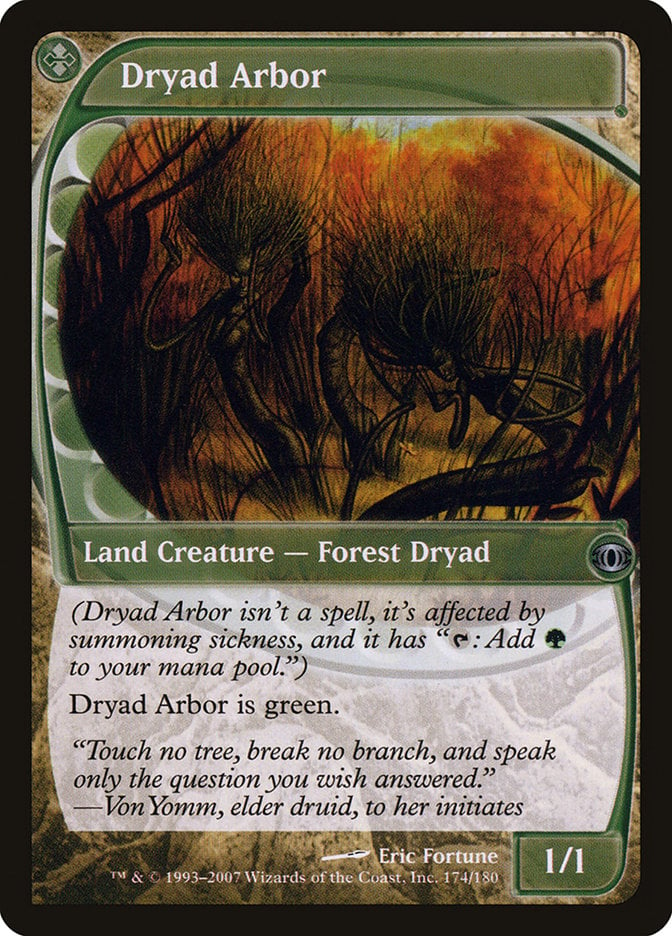
Dryad Arbor is a unique blend of a creature and a land. You play it like a land, so it isn’t cast. It can’t be countered, but it also counts as your land drop for the turn. Still, you’re getting a free creature that can tap for mana on future turns or if you have a haste enabler.
It also triggers landfall abilities the same way playing a normal land would.
#3. Castle Garenbrig
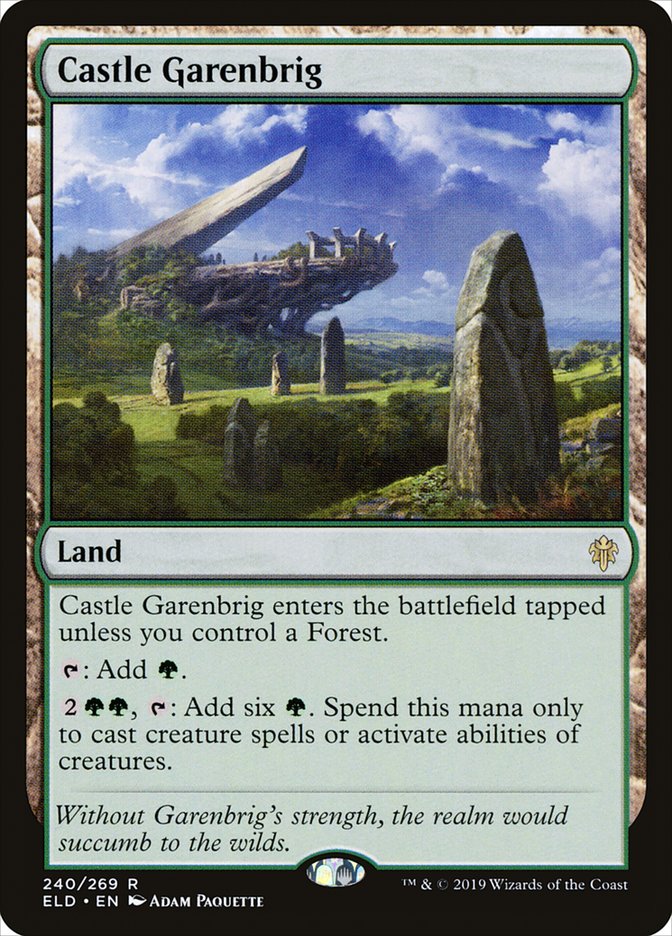
Once you can afford Castle Garenbrig’s activated ability it basically produces one extra mana. While that might not seem significant, one extra mana can often make a big difference in a game.
This card is also likely to come in untapped in a mono-green deck, so there isn’t usually a downside to running it.
#2. Boseiju, Who Endures
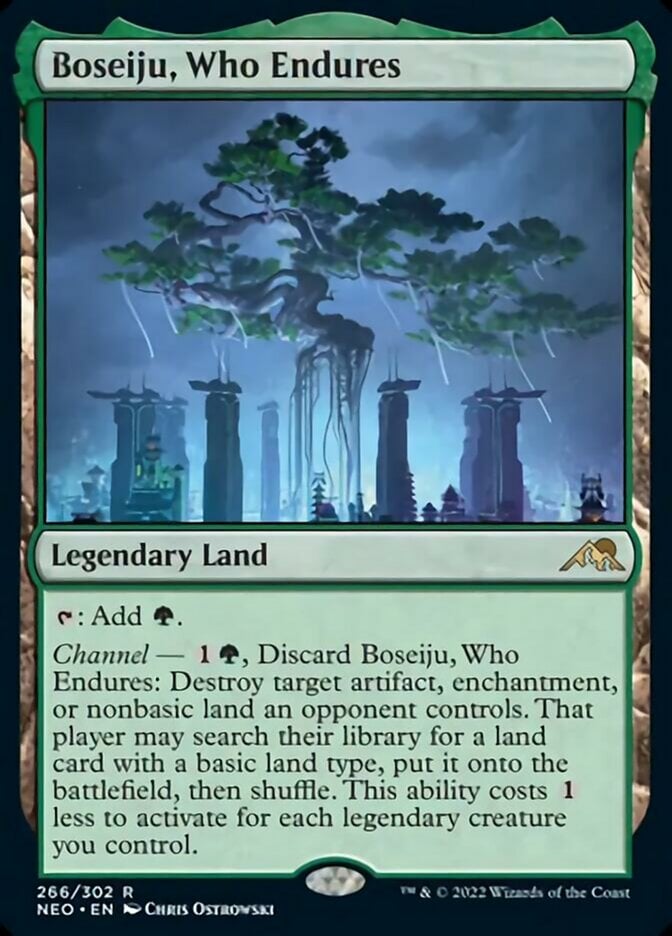
Boseiju, Who Endures is a very powerful land thanks to its channel ability. Not only does Boseiju double as cheap removal, but it also doesn’t count as a spell. Your opponent can’t counter it unless they have a way to counter an ability instead of a spell.
Boseiju synergizes very well with cards like Wrenn and Six which allow you to get it back to your hand and use it again.
#1. Gaea’s Cradle
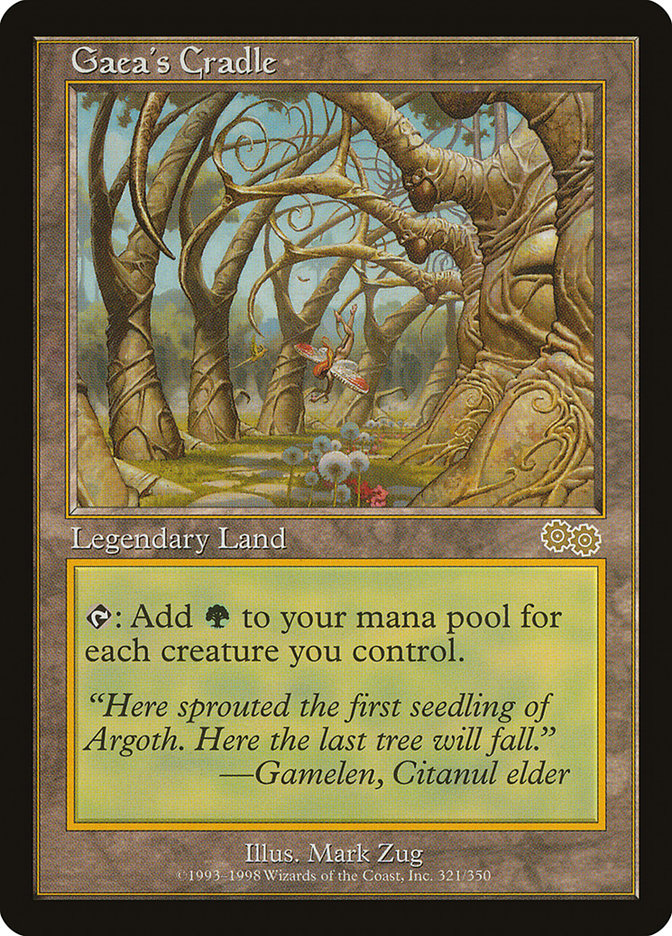
If you’re playing a lot of creatures, Gaea's Cradle accelerates your game so quickly that it’s very hard for your opponents to keep up. This card is especially powerful in decks running token-making spells with X in their cost because it can both create a ton of tokens for you and then create even more mana after you have those tokens.
If you can afford a copy or your playgroup is okay with proxies, Gaea's Cradle belongs in a ton of green decks, if not all of them.
Best Green Land Payoffs and Synergies
Most green lands synergize best with creatures. Whether it’s buffing them up or gaining benefits for having them, you’ll likely want to run them in a creature-heavy deck if you want to make the best out of these green lands
Green lands like Gaea's Cradle and Itlimoc, Cradle of the Sun also synergize very well with any X spells because they can produce a lot of mana to pump into them.
Wrap Up

Boseiju, Who Endures | Illustration by Chris Ostrowski
It makes sense that a color that has so much support for lands also has some pretty powerful lands to go along with them. Though there are plenty of great green lands to choose from, I’m hoping this list made it a bit easier for you to choose the best one for whatever deck you’re looking to build.
Are there any green lands you think deserved a spot on this list? Which of these lands do you run in your decks? Let me know in the comments below or over on Draftsim’s Twitter.
Thanks for reading, and I look forward to seeing you in the next one!
Follow Draftsim for awesome articles and set updates:
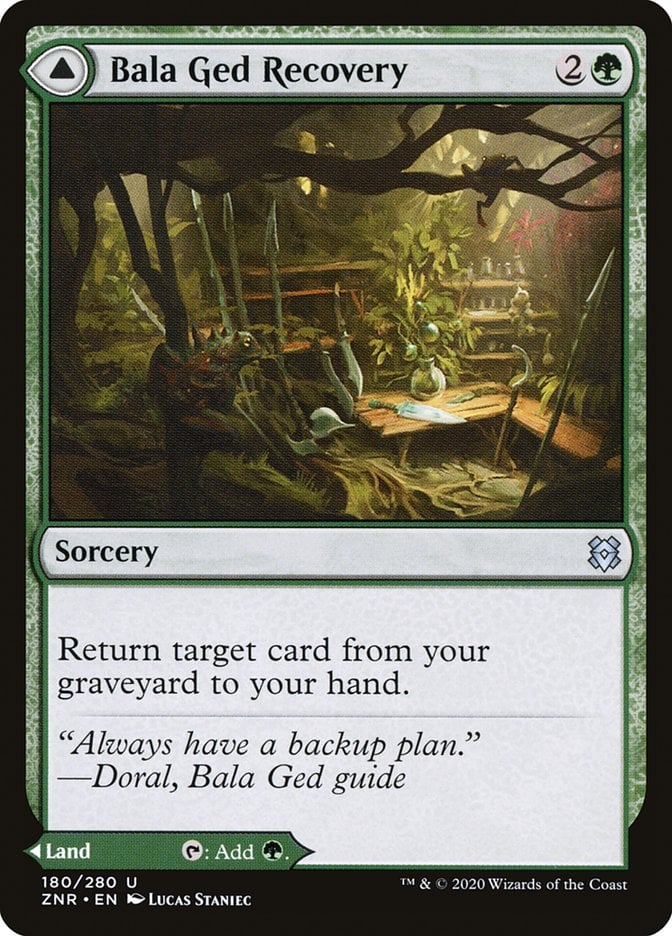


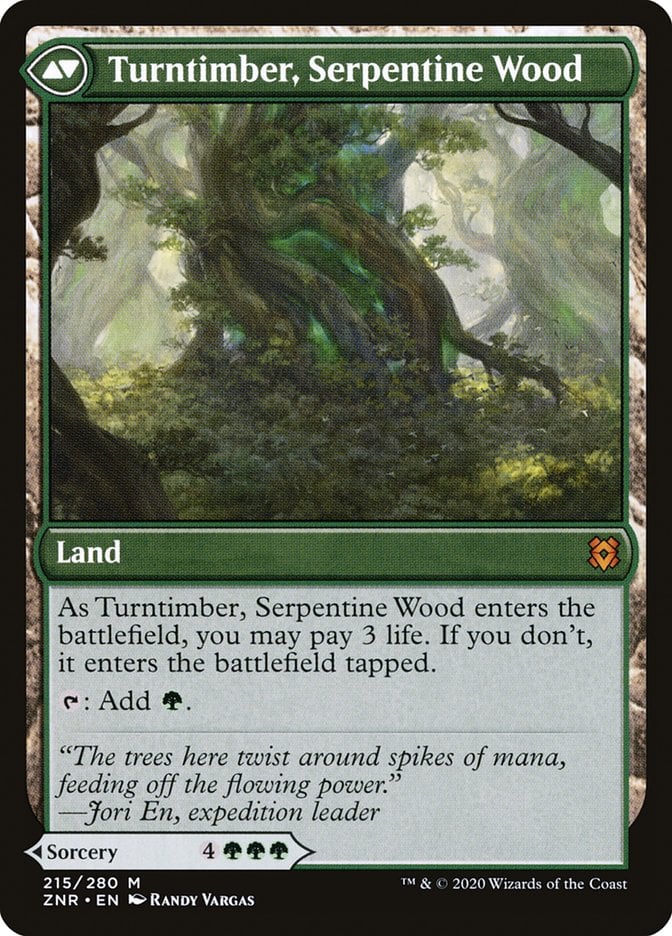
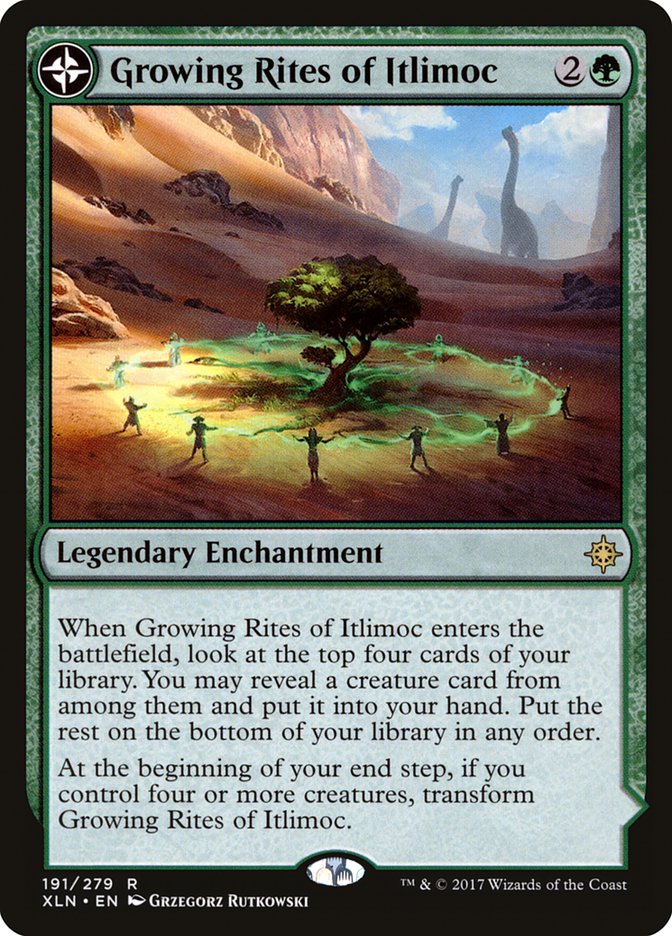


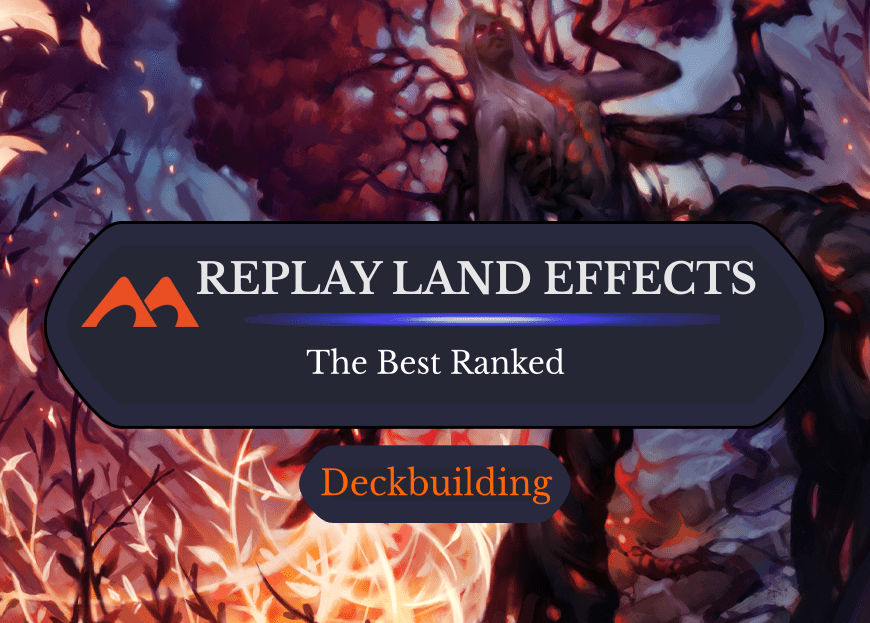
Add Comment